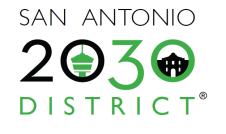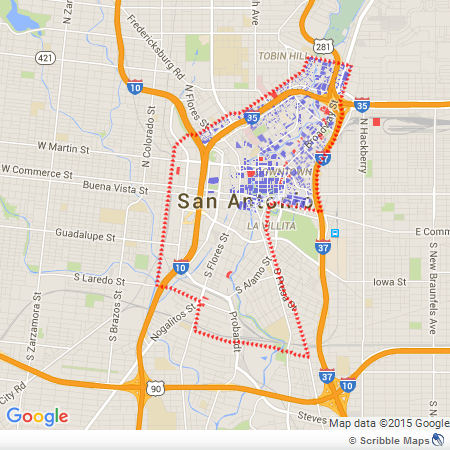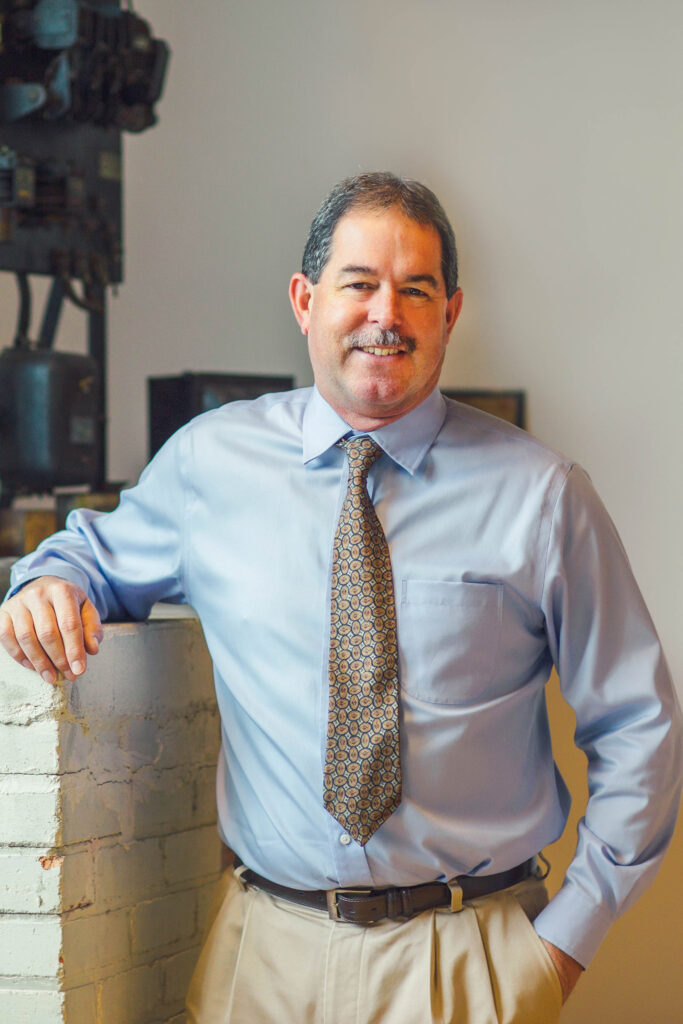
San Antonio is currently celebrating its recent designation as the 11th 2030 District®, a program of Architecture 2030. According to Elizabeth Kertesz, San Antonio’s District Executive Director, the mission of the San Antonio 2030 District®, is “to address climate change at the local level by developing strategic partnerships with organizations who support our mission, and by delivering programs, tools and resources to building owners and managers to help them achieve the program goals and create a business case for sustainability.”
Below is a map of the district. It includes the urban core spanning from Tobin Hill to Southtown.

The program is steadily growing, according to the 2030 Districts’ website, as “2030 Districts®…form to meet the energy, water and vehicle emissions reduction targets for existing buildings and new construction called for by Architecture 2030 in the 2030 Challenge for Planning.” There are currently twelve 2030 Districts® across the North America. San Antonio and Dallas are the only two Districts located in Texas, in fiscal partnership with SPEER, the South-Central Partnership for Energy Efficiency as a Resource. Amanda Cambre, High Performance Buildings Manager for SPEER, has been appointed liaison to the San Antonio 2030 District®. Other Districts include Seattle, San Francisco, Denver, Cleveland, and Toronto, and Austin is currently considering joining the 2030 movement.
Member Perspective
Brian Keller, Cleary Zimmermann’s Director of Commissioning, sits on Architecture 2030’s programming committee. Asked about his enthusiasm for Architecture 2030, Keller was adamant that, “Architecture 2030 is the only global movement that can truly impact energy use on a large scale,” though he recognizes that, “In order to do so will require the collaboration of private and public interests.”

Keller feels that Cleary Zimmermann has much to contribute to Architecture 2030, both in terms of mission and organizational processes: “As an engineering firm regularly engaged in the design and analysis of the energy use in buildings, and as a property owner in the district, we feel we are uniquely qualified to be a part of this organization. We bring our expertise to assist with planning, organization, and defining the metrics of a building’s energy use. In addition, as a full service engineering firm, we can assist with marketing and outreach programs.”
Keller is optimistic that Architecture 2030’s emphasis on public/private collaboration will increase its impact. “Historically only a few building or property owners, mainly municipal, have been motivated to develop, and more importantly, implement energy conservation programs in their properties.” He believes that, “Architecture 2030 has a greatest potential we have ever seen to be the catalyst to bring private and public building owners and developers together for a common cause.”
Want to Learn More?
On January 28th 2016, AIA San Antonio is sponsoring the “2030 Launch Party” from 5-9 pm to increase awareness of and membership in the San Antonio 2030 District®.
To learn more about 2030 Districts®, check out their website: http://www.2030districts.org/
To learn more about Architecture 2030, and the 2030 Challenge for Planning, click here: http://architecture2030.org/
By Joyce Fienman

